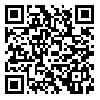1. Mollakhalili H, Papi A, Sharifirad Gh, Zare Farashbandi F, Hasanzadeh A. A survey on health literacy of inpatients educational hospitals of isfahan university of medical sciences. Health Information Management. 2014;11(4):464-473.
2. Ozdemir H, Alper Z, Uncu Y, Bilgel N. Health literacy among adults: A study from Turkey. Health Education Research. 2010; 25(3):464-477. [
DOI:10.1093/her/cyp068]
3. Horowitz AM, Kleinman DV. Oral health literacy: The new imperative to better oral health. Dental Clinics of North America. 2008;52(2):333-344. [
DOI:10.1016/j. cden.2007.12.001]
4. La Vonne AD, Zun LS. Assessing adult health literacy in urban healthcare settings. Journal of the National Medical Association. 2008;100(11):1304-1308. [
DOI:10. 1016/S0027-9684(15)31509-1]
5. Tol A, Pourreza A, Tavasoli E, Rahimi Foroshani A. Determination of knowledge and health literacy among women with type 2 diabetes in teaching hospitals of TUMS. Journal of Hospital. 2008;3(42):1-8.
6. Wengryn M, Hester EJ. Pragmatic skills used by older adults in social communication and health care contexts: Precursors to health literacy. Contemporary Issues in Communication Sciences and Disorders. 2011;38:41-52.
7. Mellor D, Russo S, McCabe MP, Davison TE, George K. Depression training program for caregivers of elderly care recipients: Implementation and qualitative evaluation. Journal of Gerontological Nursing. 2008;34(9):8-15. [
DOI:10.3928/00989134-20080901-09]
8. Tsai TI, Lee SY, Tsai YW, Kuo KN. Methodology and validation of health literacy scale development in Taiwan. Journal of Health Communication. 2010;16(1):50-61. [
DOI:10.1080/10810730.2010.529488]
9. Kickbusch I. Health literacy: An essential skill for the twenty-first century. Health Education. 2008;108(2):101-104. [
DOI:10.1108/ 09654280810855559]
10. Karimi S, Keyvanara M, Hosseini M, Jafarian M, Khorasani E. Health Literacy, Health Status, Health Services Utilization and Their Relationships in Adults in Isfahan. Health Information Management. 2014;10(6):862-875.
11. Arozullah AM, Lee SY, Khan T, et al. The roles of low literacy and social support in predicting the preventability of hospital admission. Journal of General Internal Medicine. 2006;21(2):140-145. [
DOI:10.1111/j. 1525-1497.2005.00300.x]
12. Chew LD, Bradley KA, Boyko EJ. Brief questions to identify patients with inadequate health literacy. Health. 2004;11:12.
13. Sorensen K, Van den Broucke S, Fullam J, et al. Health literacy and public health: A systematic review and integration of definitions and models. BMC Public Health. 2012;12(1):80. [
DOI:10.1186/1471-2458-12-80]
14. Howard DH, Sentell T, Gazmararian JA. Impact of health literacy on socioeconomic and racial differences in health in an elderly population. Journal of General Internal Medicine. 2006;21(8):857-861. [
DOI:10.1111/j.1525-1497.2006.00530.x] [
PMID]
15. Weiss BD, Palmer R. Relationship between health care costs and very low literacy skills in a medically needy and indigent Medicaid population. The Journal of the American Board of Family Practice. 2004;17(1):44-47. [
DOI:10.3122/jabfm.17.1.44] [
PMID]
16. Sanders LM, Federico S, Klass P, Abrams MA, Dreyer B. Literacy and child health: A systematic review. Archives of Pediatrics & Adolescent Medicine. 2009;163(2):131-140. [
DOI:10.1001/archpediatrics.2008.539]
17. Kandula NR, Nsiah Kumi PA, Makoul G, et al. The relationship between health literacy and knowledge improvement after a multimedia type 2 diabetes education program. Patient Education and Counseling. 2009;75(3):321-327. [
DOI:10.1016/j.pec.2009.04.001] [
PMID]
18. Baker DW, Gazmararian JA, Williams MV, et al. Functional health literacy and the risk of hospital admission among Medicare managed care enrollees. American Journal of Public Health. 2002;92(8):1278-1283. [
DOI:10.2105/AJPH.92.8.1278] [
PMID]
19. Shieh C, Halstead JA. Understanding the impact of health literacy on women's health. Journal of Obstetric, Gynecologic, & Neonatal Nursing. 2009;38(5):601-612. [
DOI:10. 1111/j.1552-6909.2009.01059.x]
20. Carthery Goulart MT, Anghinah R, Areza Fegyveres R, et al. Performance of a Brazilian population on the test of functional health literacy in adults. Revista de Saúde Pública. 2009;43(4):631-638.
21. Ghanbari S, Majlessi F, Ghaffari M, Mahmoodi Majdabadi M. Evaluation of health literacy of pregnant women in urban health centers of Shahid Beheshti Medical University. Daneshvar. 2012;19(97):1-12.
22. Fouladi N, Hazrati S, Shabani M, Nejaddadgar N. Investigating middle-aged health literacy in Ardabil. Journal of Health Literacy. 2017;2(1):39-44. [Persian] [
DOI:10.18869/acadpub.jhl.2.1.39]
23. Von Wagner C, Knight K, Steptoe A, Wardle J. Functional health literacy and health-promoting behaviour in a national sample of British adults. Journal of Epidemiology and Community Health. 2007;61(12):1086-1090. [
DOI:10.1136/jech.2006.053967]
24. Afrasiabi H, Farhani N. Qualitative Study of a Background of Drug Use among Women in Yazd. Social Behavior Research & Health. 2017;1(1):27-35.
25. Afshari M, Khazaei S, Bahrami M, Merati H. Investigating adult health literacy in Tuyserkan City. Journal of Education and Community Health. 2014;1(2):48-55. [
DOI:10.20286/jech-010248]
26. Javadzade H, Sharifirad G, Reisi M, Tavassoli E, Rajati F. Health literacy among adults of Isfahan, Iran. Journal of Health System Research. 2013;9(5):540-549.
27. Mahmoudi H, Taheri A. Relation between information literacy and health literacy of students in Ferdowsi University of Mashhad. Human Information Interaction. 2015;2(2):31-41.
28. Peyman N, Samiee Roudi Kh. Investigating the status of health literacy among health providers of rural area. Journal of Health Literacy. 2016;1(1):46-52.
29. Tehrani Banihashemi SA, Amirkhani MA, Haghdoost AA, et al. Health literacy and the influencing factors: A study in five provinces of Iran. Strides in Development of Medical Education. 2007;4(1):1-9.
30. Lee SY, Tsai TI, Tsai YW, Kuo KN. Health literacy, health status, and healthcare utilization of Taiwanese adults: Results from a national survey. BMC Public Health. 2010;10(1):614. [
DOI:10.1186/1471-2458-10-614] [
PMID]
31. Bains SS, Egede LE. Associations between health literacy, diabetes knowledge, self-care behaviors, and glycemic control in a low income population with type 2 diabetes. Diabetes Technology & Therapeutics. 2011;13(3):335-341. [
DOI:10.1089/dia.2010.0160]

 , Seyed Saeed Mazloomy Mahmoodabad *2
, Seyed Saeed Mazloomy Mahmoodabad *2 
 , Zohreh Karimian Kakolaki1
, Zohreh Karimian Kakolaki1 
 , Hosein Fallahzadeh3
, Hosein Fallahzadeh3 
 , Farahnaz Khabiri1
, Farahnaz Khabiri1 






